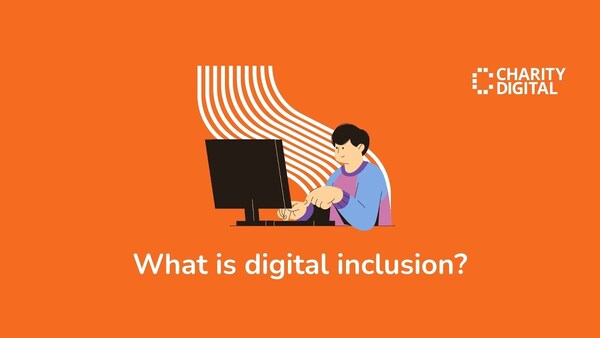Insights
INSIGHTS
All Topics
My Account
The charities embracing carbon capture and offsetting
We explore some exemplary charities from the UK and around the world that are tackling climate change through carbon capture and carbon offsetting
Carbon capture and sequestration are technologies moving from wishful thinking to reality, helping in the fight against climate change. Charities have long been in the market and are leaders in the space. Here, we shine a light on their impact and how to get involved.
What is carbon capture and sequestration?
The idea that carbon emissions can be captured and stored isn’t new. UK Government defines carbon capture, utilisation, and storage (CCUS) as: “Carbon capture works by capturing carbon dioxide (CO2) before it reaches the atmosphere and storing it safely underground.”
Carbon sequestration, another term linked to CCUS, is the process of storing carbon in natural and artificial formations. This is different to capture, which takes CO2 out of circulation and grounds it into another form. There are many natural sinks that can hold CO2 over the long term. In the UK, the most common natural sinks are forests and peatland.
While the government is pushing forward with its strategy under the plan ‘Carbon Capture, Usage and Storage (CCUS) by 2035’, charities and non-profits are also moving at pace.
Charities combining existing work with carbon capture
Woodland Trust is a champion in its overall ambition to preserve, protect, and grow the UK’s forestry assets. One of the charity’s flagship programmes, Woodland Carbon for Businesses, involves using trees as a carbon sink to offset emissions.
To get set up, businesses complete an eligibility assessment. The charity gets in touch and together both parties take a look at the data and what the joint ambitions are.
The Woodland Trust can then plan trees in line with the quantum of emissions to offset. For the benefit of the business, the trust registers the carbon units (or credits) on the UK Land Carbon Registry, which makes it clear who the beneficiaries are.
For the Woodland Trust, adding on the carbon offset means that not only are revenues generated from the programme but all the units sold are directly linked with the charity’s impact.
The global approach to offsetting
The UK’s natural environment isn’t the only one to be protected and enhanced. Taking an international approach, Carbon Neutral Britain offers solutions to businesses and individuals.
The premise is simple offsetting. Organisations and individuals take stock of their emissions and then check in with Carbon Neutral Britain. These emissions are then offset with projects that reduce them. For example, Carbon Neutral Britain offers mangrove conservation and forest creation. Many of these efforts are not in the UK, offering the British a way to have a positive impact overseas. Once offset, businesses typically receive verified carbon credits.
Charities on the forefront of carbon capture and sequestration
While many of the offsetting projects involve known technologies and mechanisms, other charities are pushing the frontier.
Freshwater Habitats Trust, with UK Government funding, is piloting a scheme to measure the amount of carbon that wetlands in Oxfordshire and Buckinghamshire can capture.
Through promoting the growth and maintaining the wetlands, it is anticipated that the ponds and habitats will be a live carbon sink. The charity, working with Natural England, will be monitoring the first 6,500 hectares over a ten-year period.
Similar to the Freshwater Habits Trust’s work, two charities, National Trust and Rewilding Britain, are pushing the boundaries of carbon sequestration. Rather than housing carbon in rock sinks or trees, the Exmoor rewilding project promotes and restores the ‘wildness’ of nearly 2,000 hectares.
The project will return slow-grazing animals to the site, increase wetness, and protect the coastal areas. The thesis is that wildness promotes carbon sequestration.
The potential is huge. If successful, non-traditional forest, waterway and peatland projects could be viable for carbon offsetting. This would open up a huge area for investment and conservation.
Top tips to get started on CCUS, carbon capture, and offsetting
CCUS, carbon capture, and offsetting all start with the same premise of knowing what emissions are entering and exiting the atmosphere. To get started we recommend:
Determining materiality
Within the organisation, determine what impact metrics align with the overall green strategy. Carbon offsetting is one of many avenues to pursue when it comes to sustainability.
Conduct an emissions assessment
For charities who do want to pursue reduction, carbon capture, or offsetting, getting an emissions evaluation is key. At Charity Digital, we note some of the digital low-cost options for those on a budget.
Decide on what you’ll do to offset or reduce emissions
Once you’ve decided to pursue offsetting, ensure you’re aware of the compliance framework. The Woodland Carbon Code and the Peatland Code are a must read. These outline how carbon credits are qualified in the UK. For charities looking overseas, do research on how the credits or units are created since they are an indication of the quality of the project.
More on this topic
Recommended Products
Related Videos
Our Events
Charity Digital Academy
Our courses aim, in just three hours, to enhance soft skills and hard skills, boost your knowledge of finance and artificial intelligence, and supercharge your digital capabilities. Check out some of the incredible options by clicking here.
















